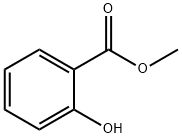Biapenem , ≥99% , 120410-24-4
Synonym(s):
6-[[(4R,5S,6S)-2-Carboxy-6-[(1R)-1-hydroxyethyl]-4-methyl-7-oxo-1-azabicyclo[3.2.0]hept-2-en-3-yl]thio]-6,7-dihydro-5H-pyrazolo[1,2-a][1,2,4]triazol-4-ium inner salt;Biapenern
CAS NO.:120410-24-4
Empirical Formula: C15H18N4O4S
Molecular Weight: 350.39
MDL number: MFCD00864863
EINECS: 204-352-8
| Pack Size | Price | Stock | Quantity |
| 10MG | RMB193.60 | In Stock |
|
| 50MG | RMB627.20 | In Stock |
|
| 250mg | RMB2767.20 | In Stock |
|
| 500mg | RMB4935.20 | In Stock |
|
| others | Enquire |
PRODUCT Properties
| Melting point: | 265-271°C (dec.) |
| alpha | D20 -32.9° (c = 0.5) |
| storage temp. | -20°C |
| solubility | H2O: ≥5mg/mL (warmed) |
| form | powder |
| color | white to beige |
| Water Solubility | H2O: ≥5mg/mL (warmed) |
| InChI | InChI=1/C15H18N4O4S/c1-7-11-10(8(2)20)14(21)19(11)12(15(22)23)13(7)24-9-3-17-5-16-6-18(17)4-9/h5-11,20H,3-4H2,1-2H3/t7-,8-,10-,11-/s3 |
| InChIKey | MRMBZHPJVKCOMA-YJFSRANCSA-N |
| SMILES | C(C1=C([C@H](C)[C@]2([H])[C@@]([H])([C@H](O)C)C(=O)N12)SC1C[N+]2=CN=CN2C1)(=O)[O-] |&1:3,5,7,9,r| |
| CAS DataBase Reference | 120410-24-4(CAS DataBase Reference) |
Description and Uses
Biapenem was introduced in Japan as a parenteral treatment for bacterial infections. This new 1-β-methylcarbapenem can be prepared by reaction of commercially available 4-nitrobenzyl protected β-methylcarbapenem enolphosphate with mercapto bicyclotriazolium chloride, obtained in 11 steps starting from hydrazine, followed by deprotection of the carboxylic acid function. Biapenem is a bacterial cell wall synthesis inhibitor with a broad spectrum in vitro antibacterial activity encompassing many Gramnegative and Gram-positive aerobic and anaerobic bacteria, including species producing β-lactamases. Like imipenem, biapenem is moderately active against fnferococcus faecalis and E. faecuirn and is inactive against methicillin-resistant Staphylococcus aureus. Biapenem is stable to hydrolysis by human renal dihydropeptidase I (DHP-I) and therefore does not require the coadministration of a DHP-I inhibitor. In clinical trials, biapenem showed good clinical and microbiological efficacy in the treatment of patients with intraabdominal, lower respiratory tract and complicated urinary tract infections. After intravenous administration, the drug is widely distributed, has linear pharmacokinetics and is mainly excreted in the urine with an elimination half-life of approximately 1 h. Biapenem is generally well tolerated, the most common adverse events being skin eruptions/rashes, nausea and diarrhea.
A carbepenem with antibacterial action
Safety
| Symbol(GHS) |  GHS07 |
| Signal word | Warning |
| Hazard statements | H315-H319-H335 |
| Precautionary statements | P261-P264-P271-P280-P302+P352-P304+P340-P305+P351+P338-P312-P313-P337+P313-P362-P403+P233-P405-P501 |
| WGK Germany | 3 |
| HS Code | 2941.90.5000 |




